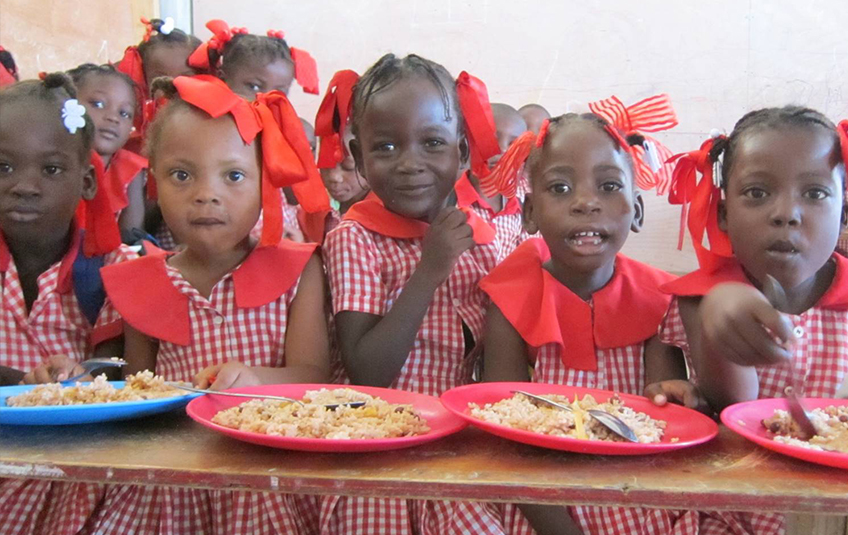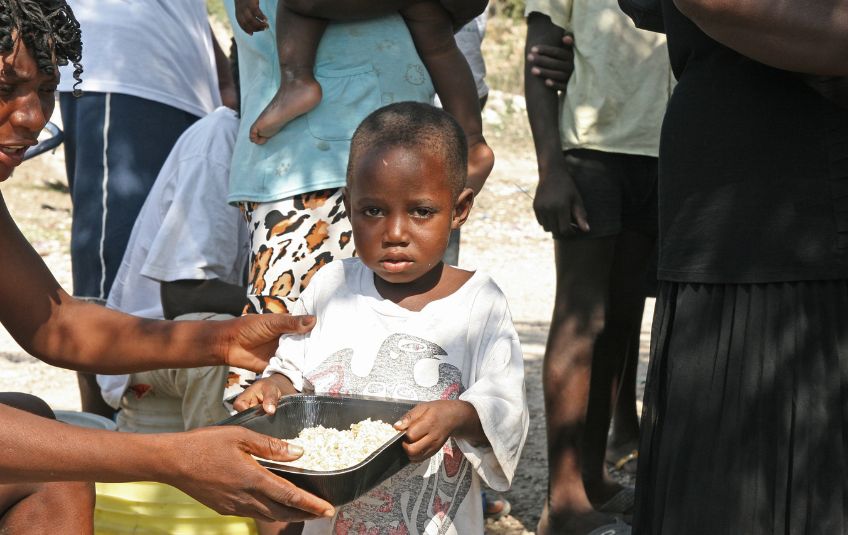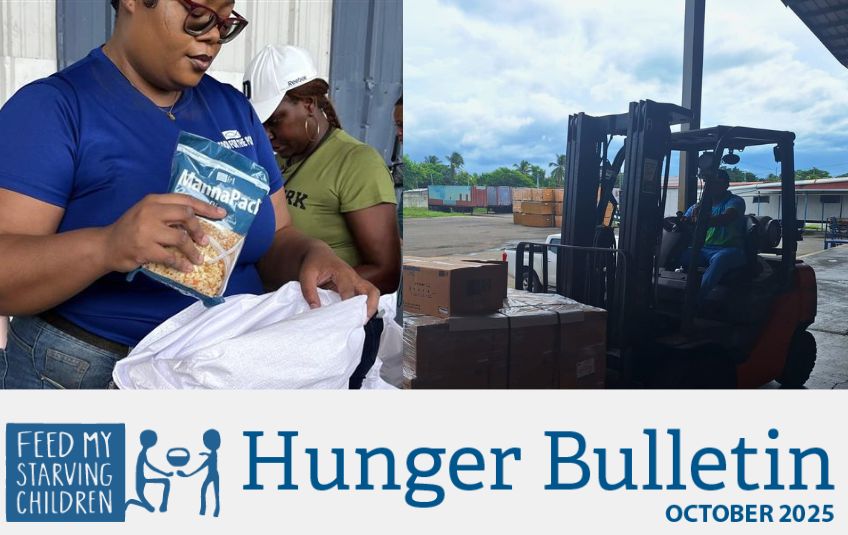The Feed
Stories of Feeding God's Children Hungry in Body & Spirit
On January 12, 2010, a magnitude 7.0 earthquake struck Haiti, killing nearly 250,000 people and displacing 1.5 million. It destroyed countless buildings and other vital infrastructure, requiring the already poverty-stricken country to start over.
“The earthquake was a momentous event that changed Haiti forever,” FMSC’s Regional Program Manager for the Caribbean, Junior Obrand, said. “But one thing is certain: The earthquake did not steal the hope and resilience of the people.”
In commemoration of the earthquake, we are highlighting our resilient food partners in Haiti throughout the month of January.
An Interview with Ken Bever, President of Hope for Haiti’s Children
What was Haiti like before the earthquake?
In 2009, Port-au-Prince and other cities were experiencing more modernization and an increase of trained professionals. A middle class seemed to be emerging. Haiti was becoming even more connected with the rest of the world. Momentum was growing for education and skills training. In the past, citizens of Haiti would leave the country after receiving a little education. By 2009, some opportunities had improved the potential to stay and make a living.
Our Hope for Haiti’s Children home office was in downtown Port-au-Prince, where we also supported children attending the Delmas Christian School. The school was a government testing center with satellite Internet, a computer lab and nursing school.
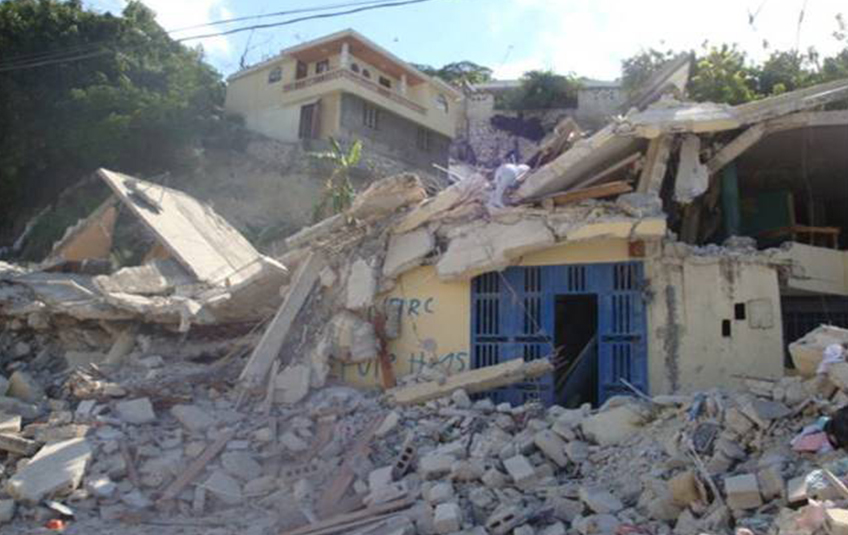
What was Haiti like after the earthquake?
Port-au-Prince and its western suburbs had extensive damage from the earthquake. At 4:00pm when the earthquake hit, many skilled professionals were at work in offices or in professional schools throughout the city. At the Delmas Christian School, 31 nursing students and a doctor were inside the 3-story building when the earthquake hit. The building collapsed, taking the lives of every student and the doctor. Our main Hope for Haiti’s Children office was gone as well. This was the case for many of the buildings in Port-au-Prince, resulting in the deaths of hundreds of skilled professionals.
The schoolchildren at the Delmas school had been released from classes earlier that day and were home, but many homes also collapsed. We had many sponsored children who instantly became orphans. Teenagers were caring for younger siblings. Many children were on the streets.
Shortly after the earthquake, people began to flee the country. There was little left for them in Port-au-Prince, and it was difficult to rebuild. Many NGO’s and nonprofits arrived in Haiti to help. While a large sum of money was being given from people all over the world to aid and assists, unfortunately some of the organizations did not have infrastructure in place to administer the help and so much of the funding did not go where it was intended.
We are very grateful we already had “boots on the ground” ready to provide shelter and distribute food, water, medical aid, and tarps. We so appreciated the cooperation with many Christian groups and coordinated efforts.
How has Hope for Haiti’s Children changed due to the earthquake?
The earthquake helped us recognize the importance of local trained, trusted Christian leaders and helped us shape our future operations at our schools, orphanages and camps.
With our government-recognized NGO in Haiti, now 100% of our programs are run with local Haitian leadership. Schools and programs can still operate even during times of unrest in Port-au-Prince.
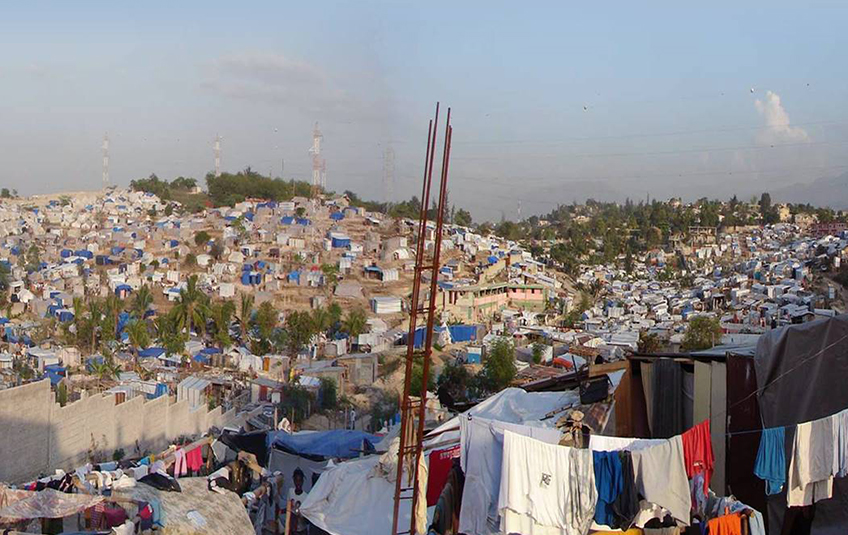
How has Haiti as a whole changed?
The Haitian people are resilient. They continue to work hard to rebuild what had been established before the earthquake. What we believe, however, is that the future hope for Haiti lies in training the next generation of Haitian leaders who will truly care about others - instilling in them the mind of Christ, who was the greatest servant of all.
Empowering the Resilient
Haiti is a special place for Feed My Starving Children. Since the earthquake, we have worked with 93 partners in Haiti just like Hope for Haiti's Children to distribute millions of lifesaving meals.
These meals enable our partners to provide education, healthcare, discipleship, employment and so much more throughout Haiti. These endeavors empower the already-resilient Haitian people.
“Resilience is the idea of never giving up,” Junior said. “Resilience is the idea of getting back up after being knocked down by political unrest, earthquakes, cholera and hurricanes.”
After all that Haiti has been through; the United Nations last month published a report that Haiti faces its harshest test yet – an economic crisis where one in three people need urgent food assistance. That amounts to 4.6 million people – nearly half of which are children.
Ten years have passed since the day Haiti was shaken, but we have not forgotten. And we will continue to support our partners on the ground no matter how difficult things get.
Yes, Haiti is resilient. But she still needs us.
Subscribe to The Feed
We'll periodically send stories of hope to your inbox.

